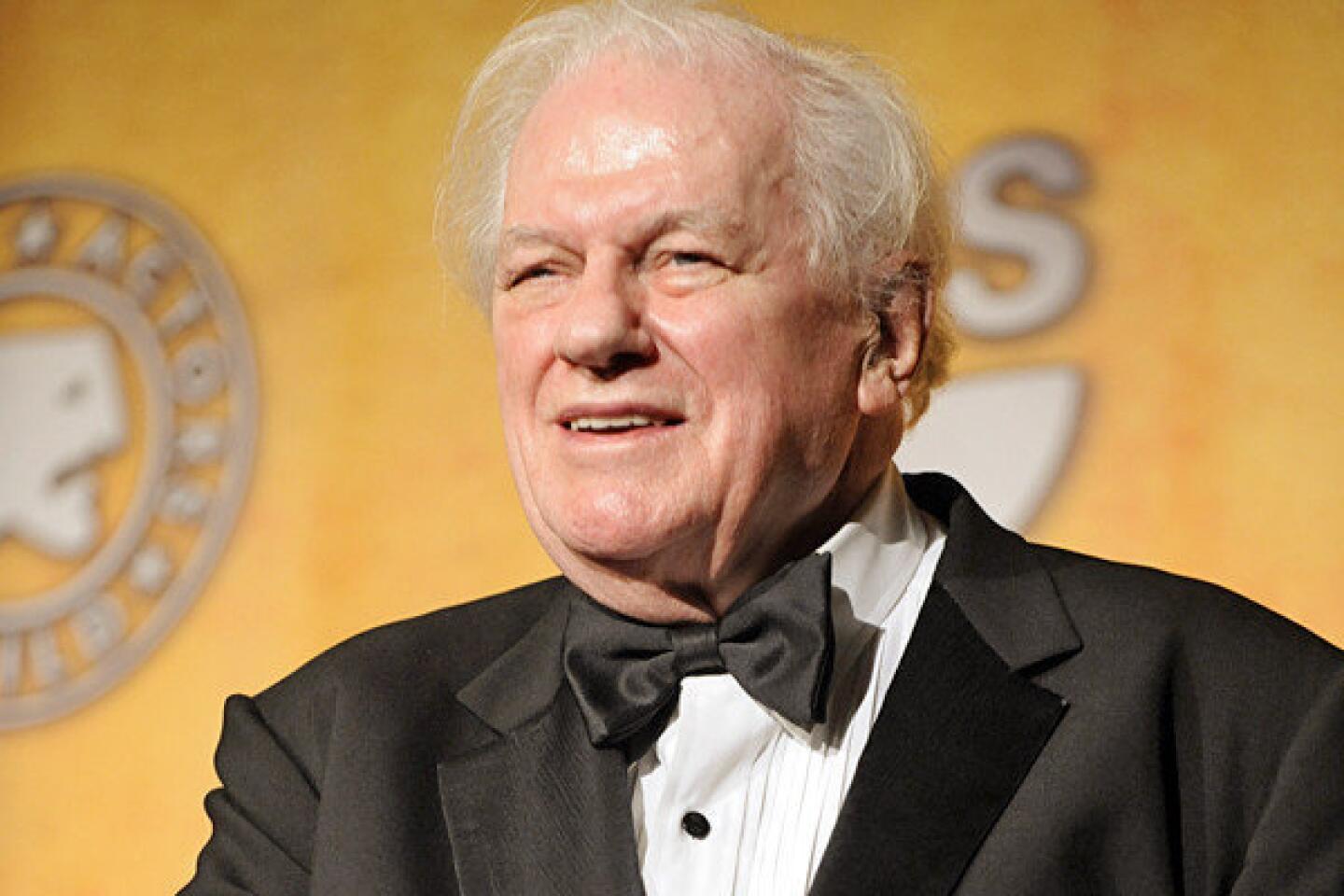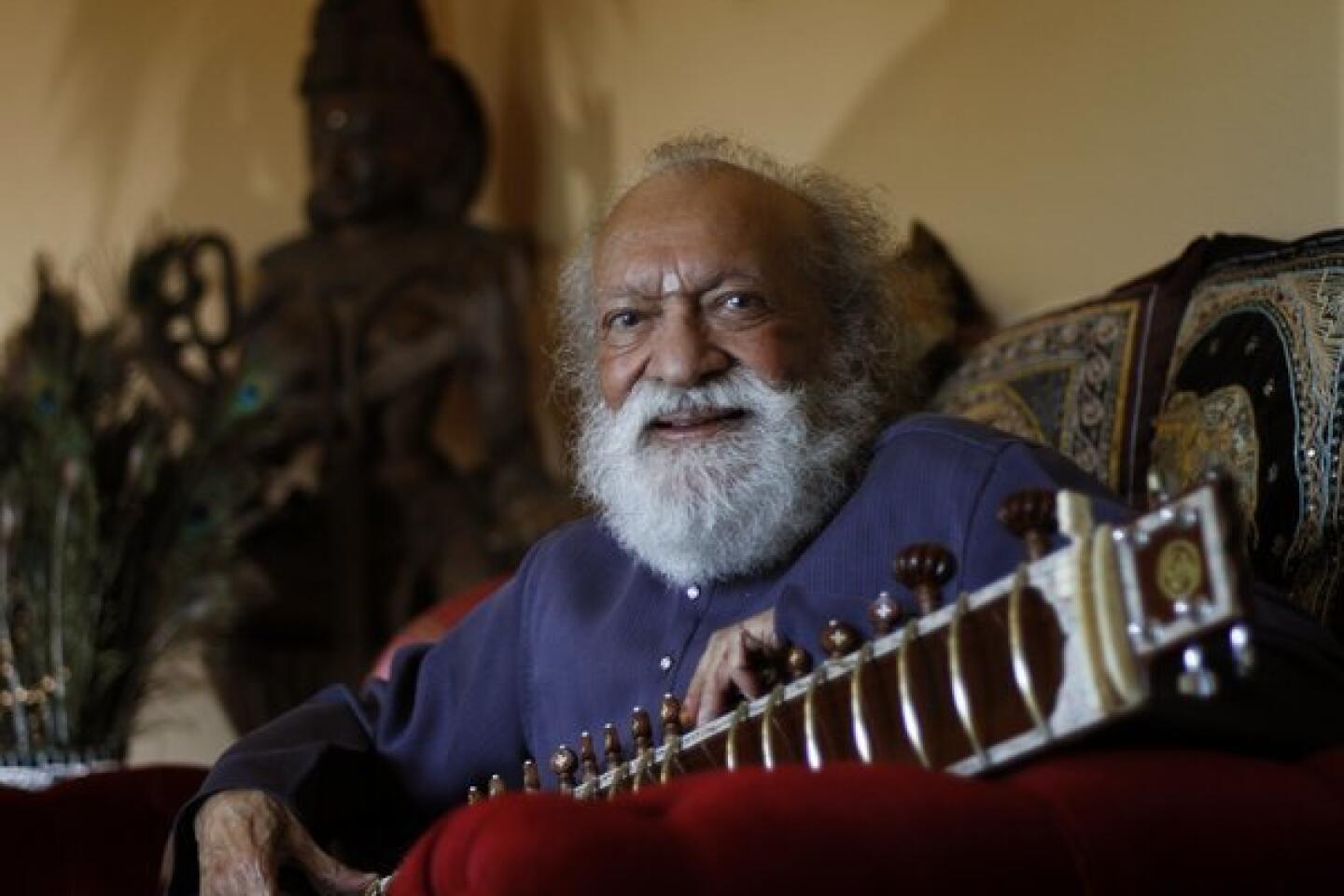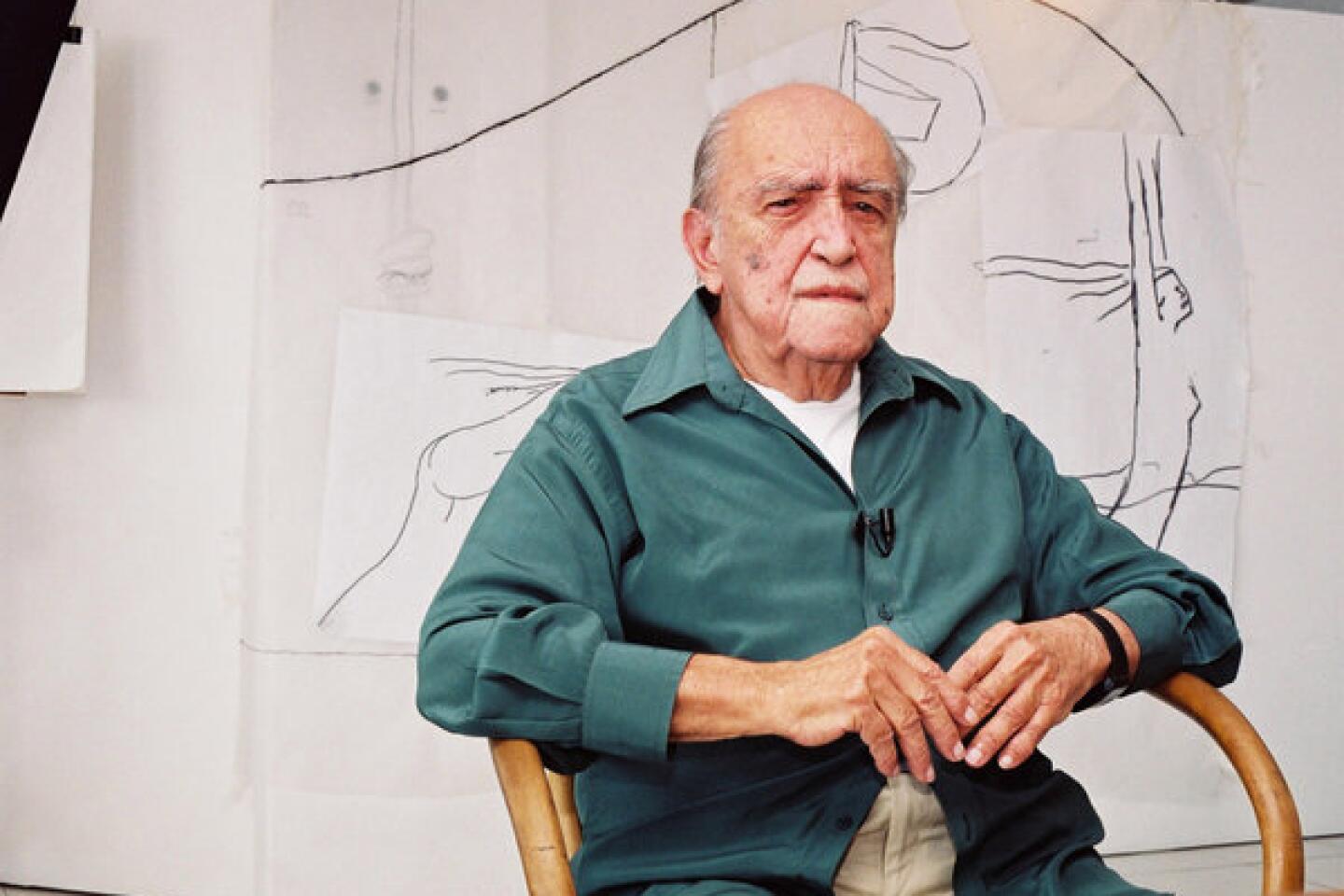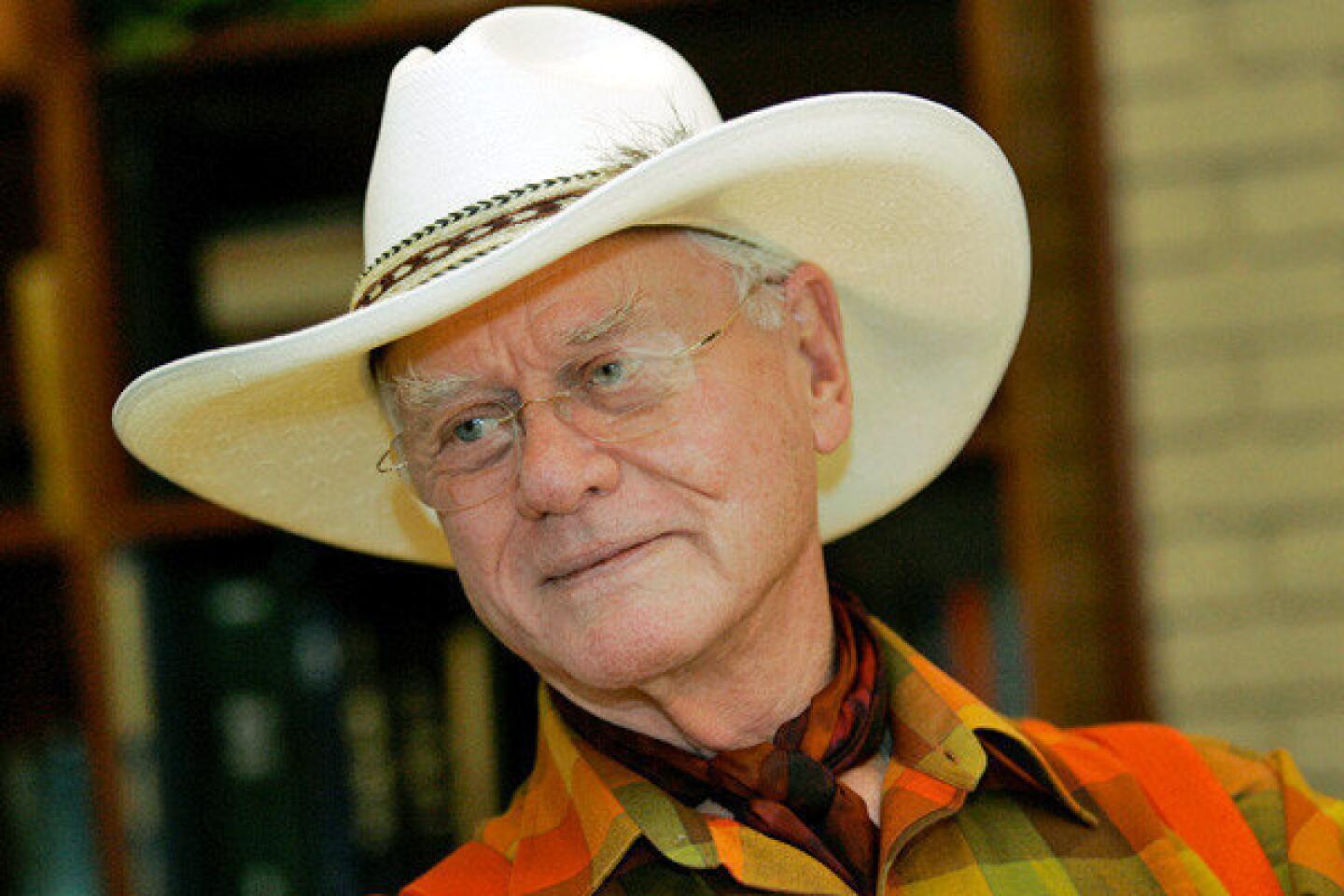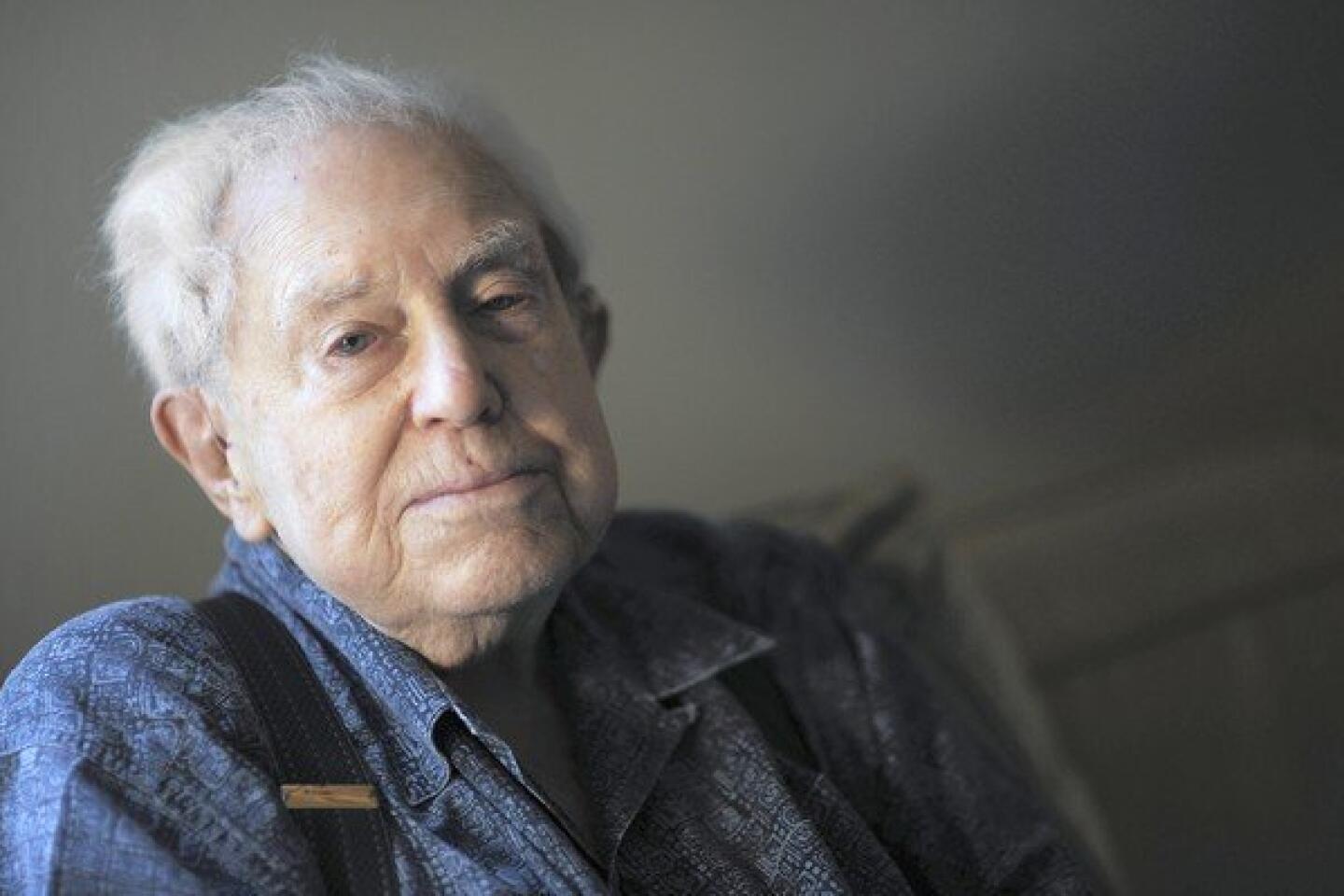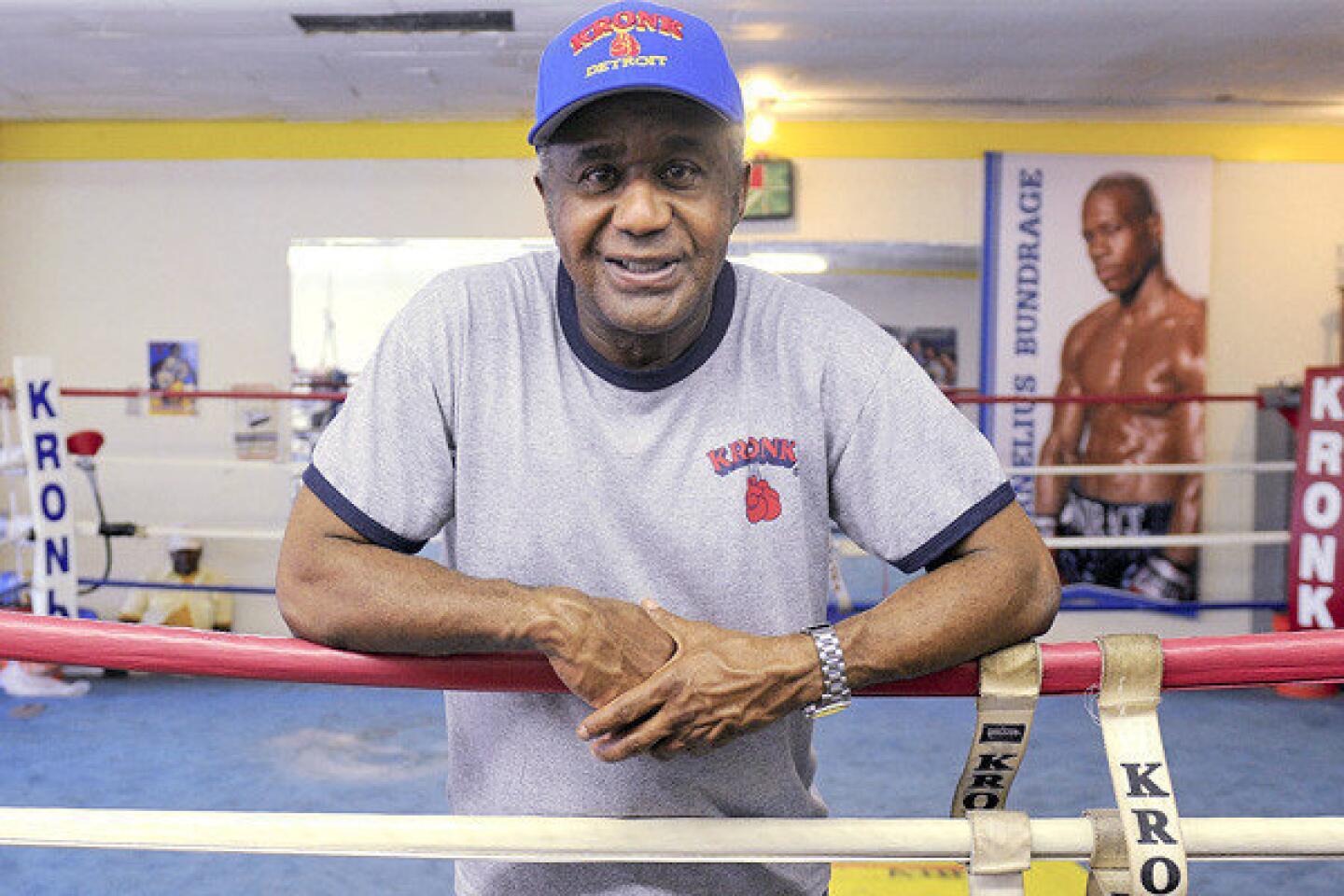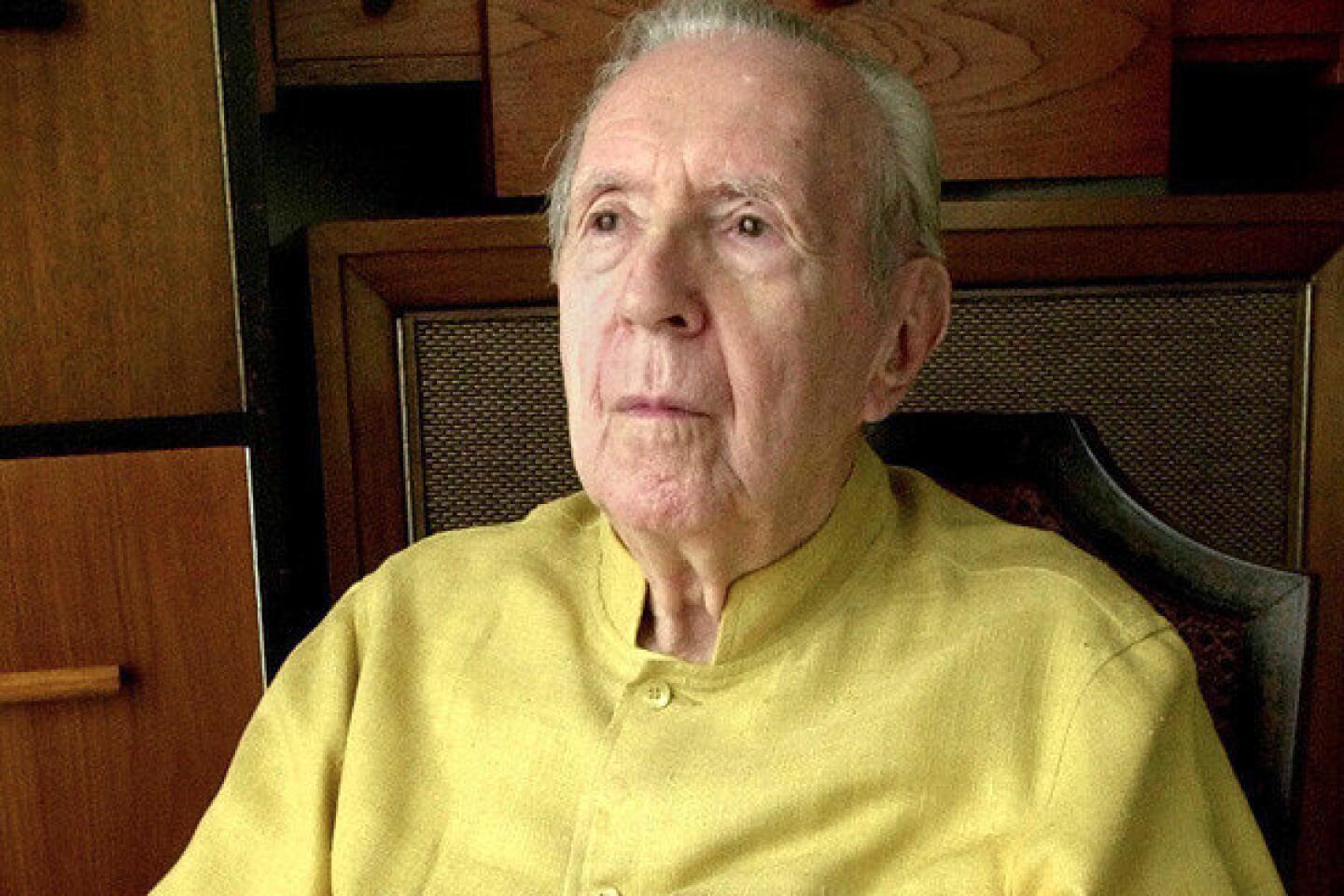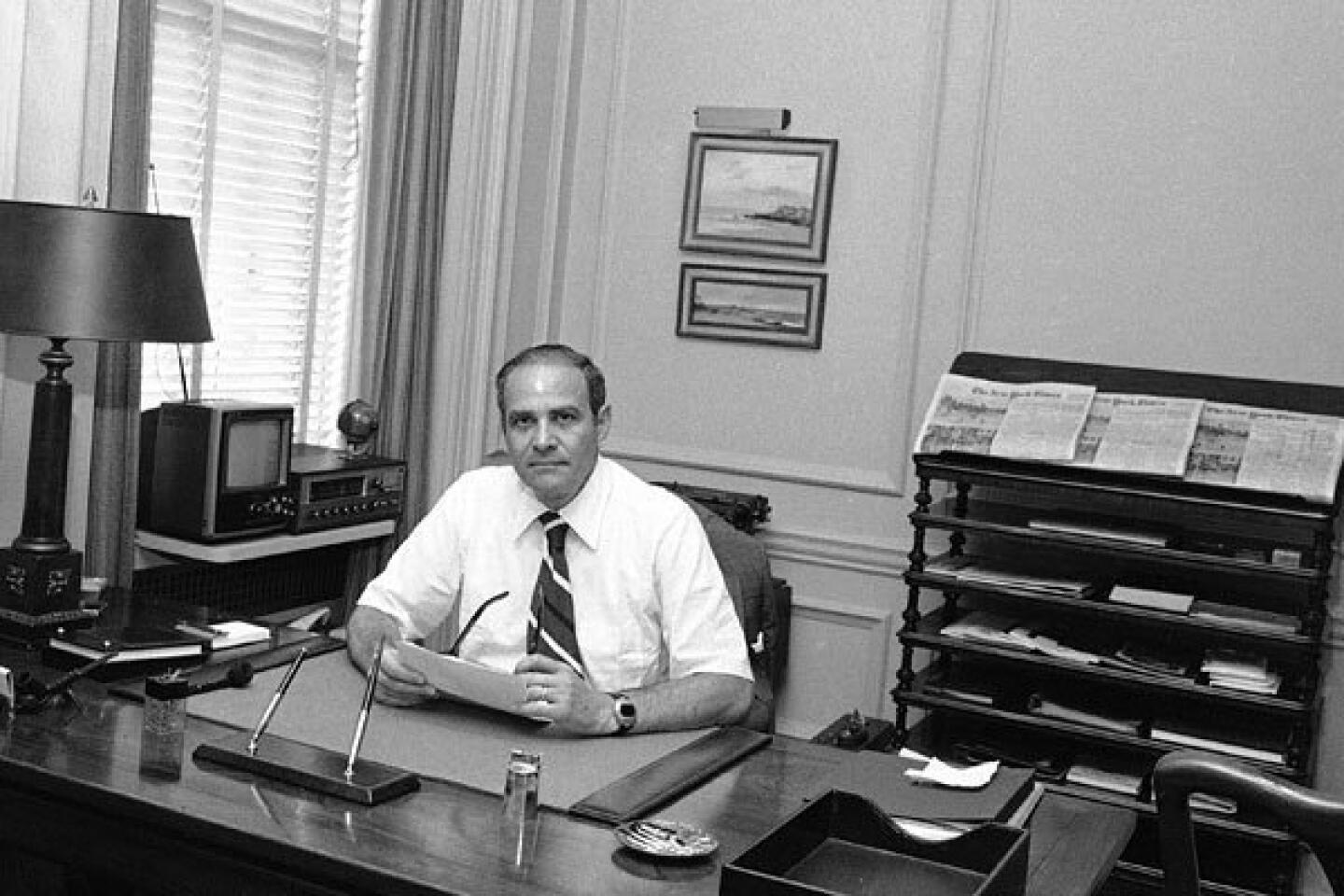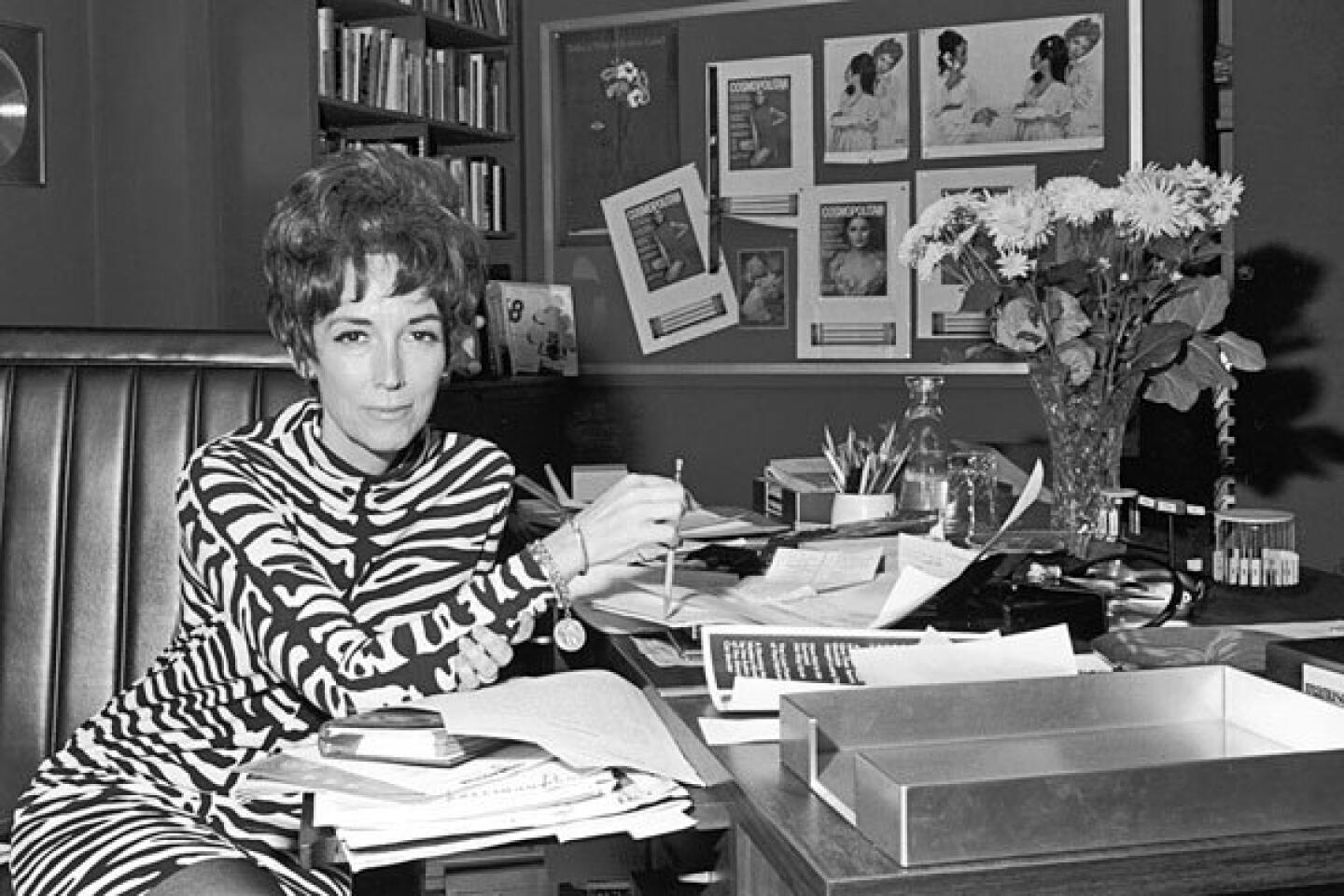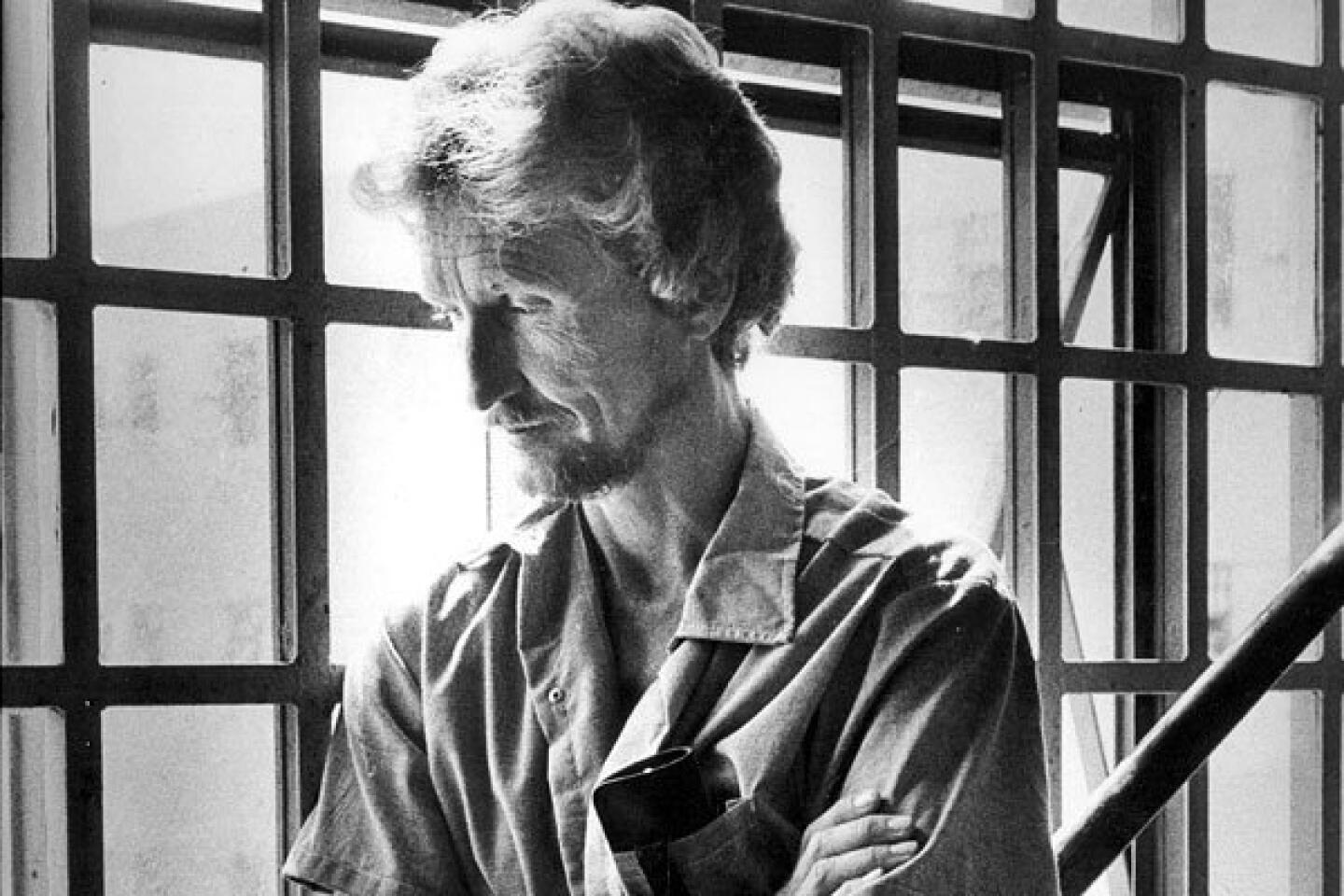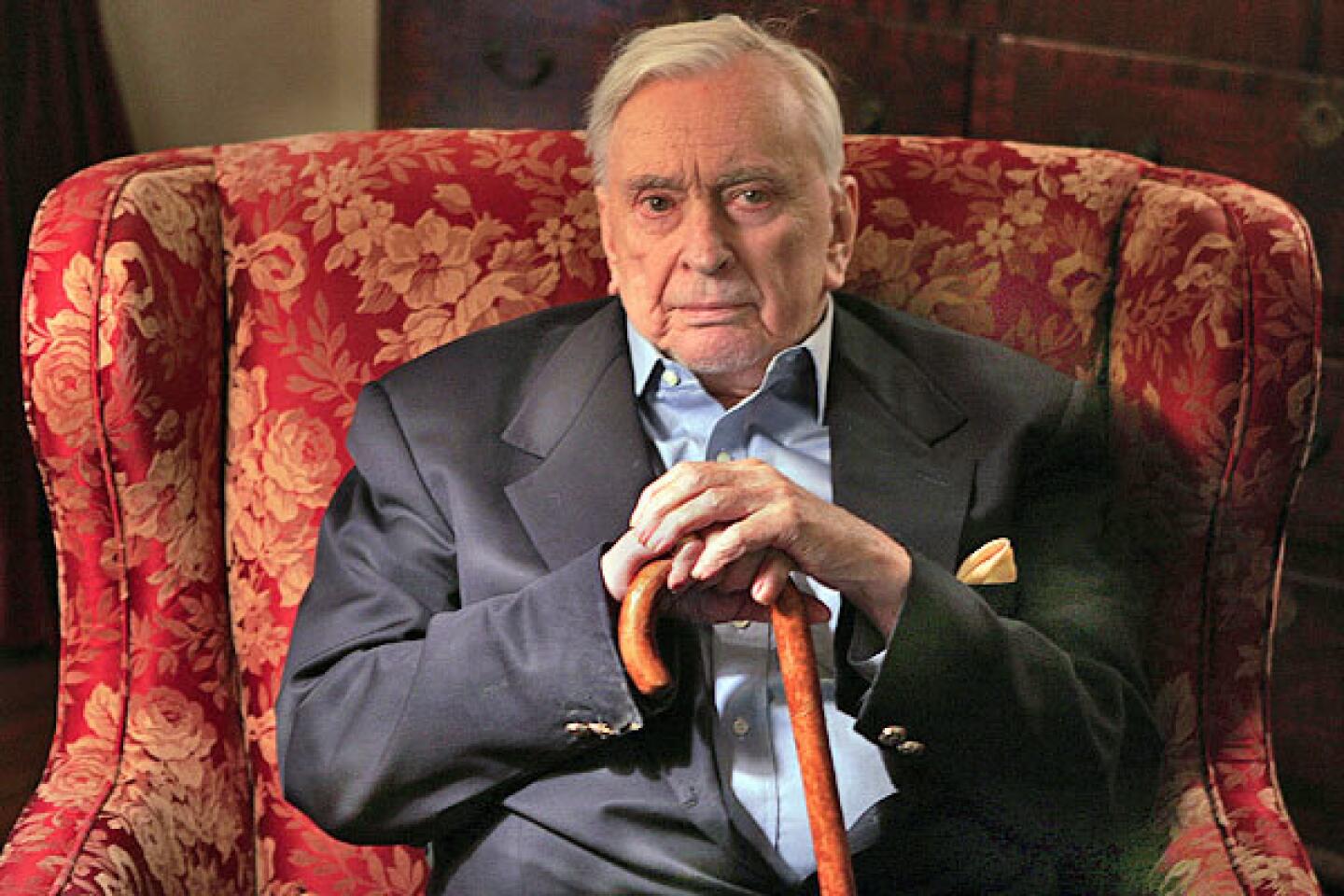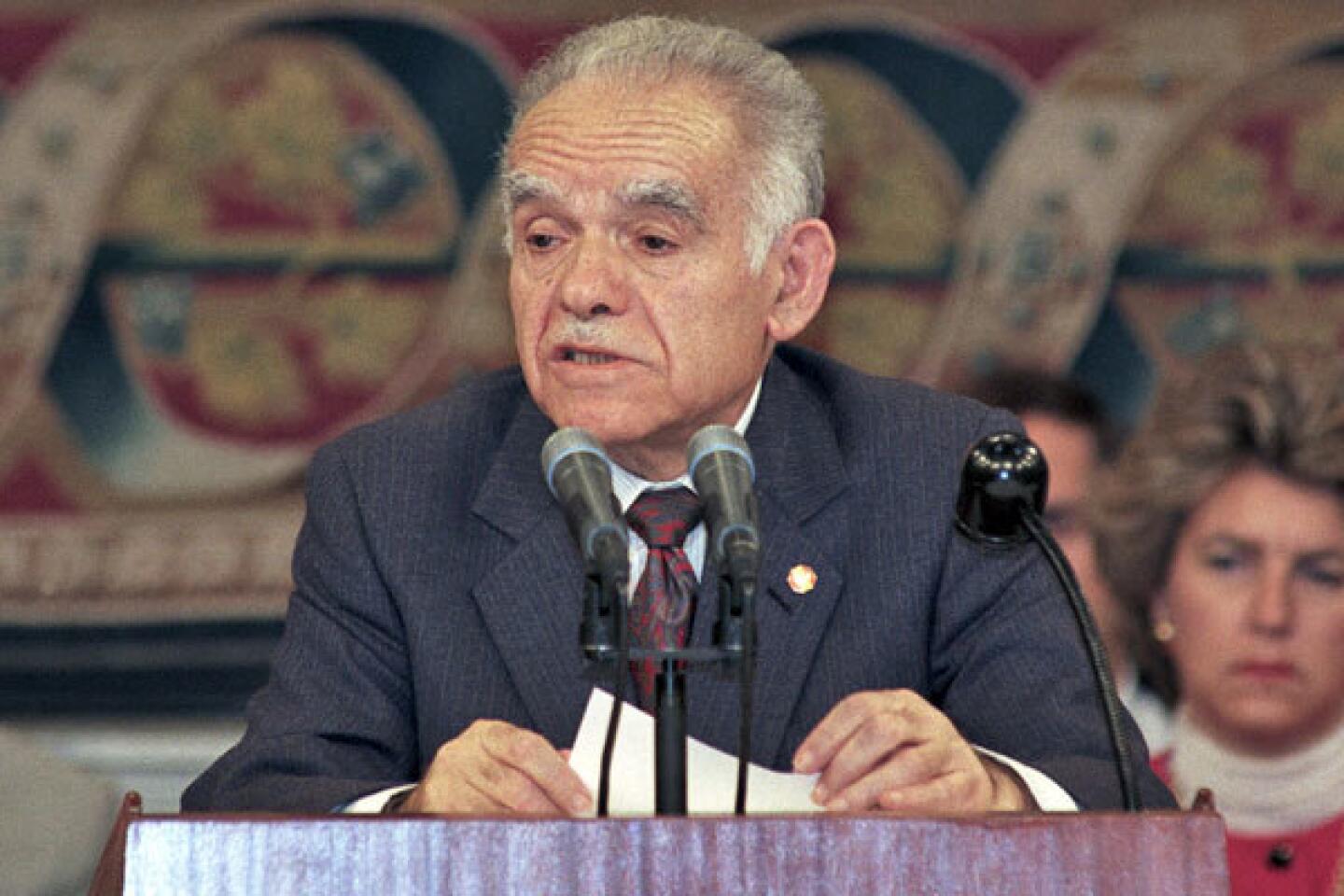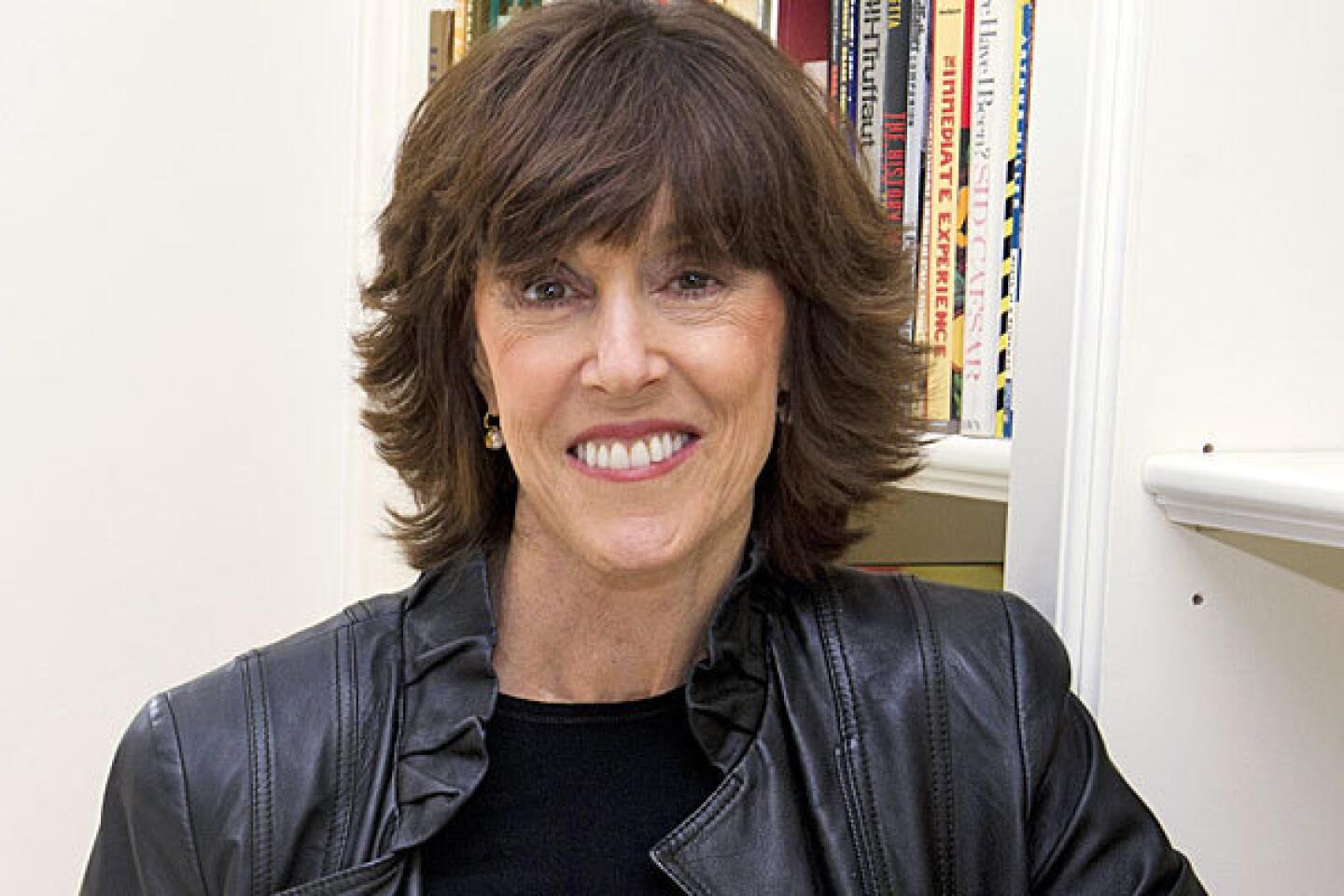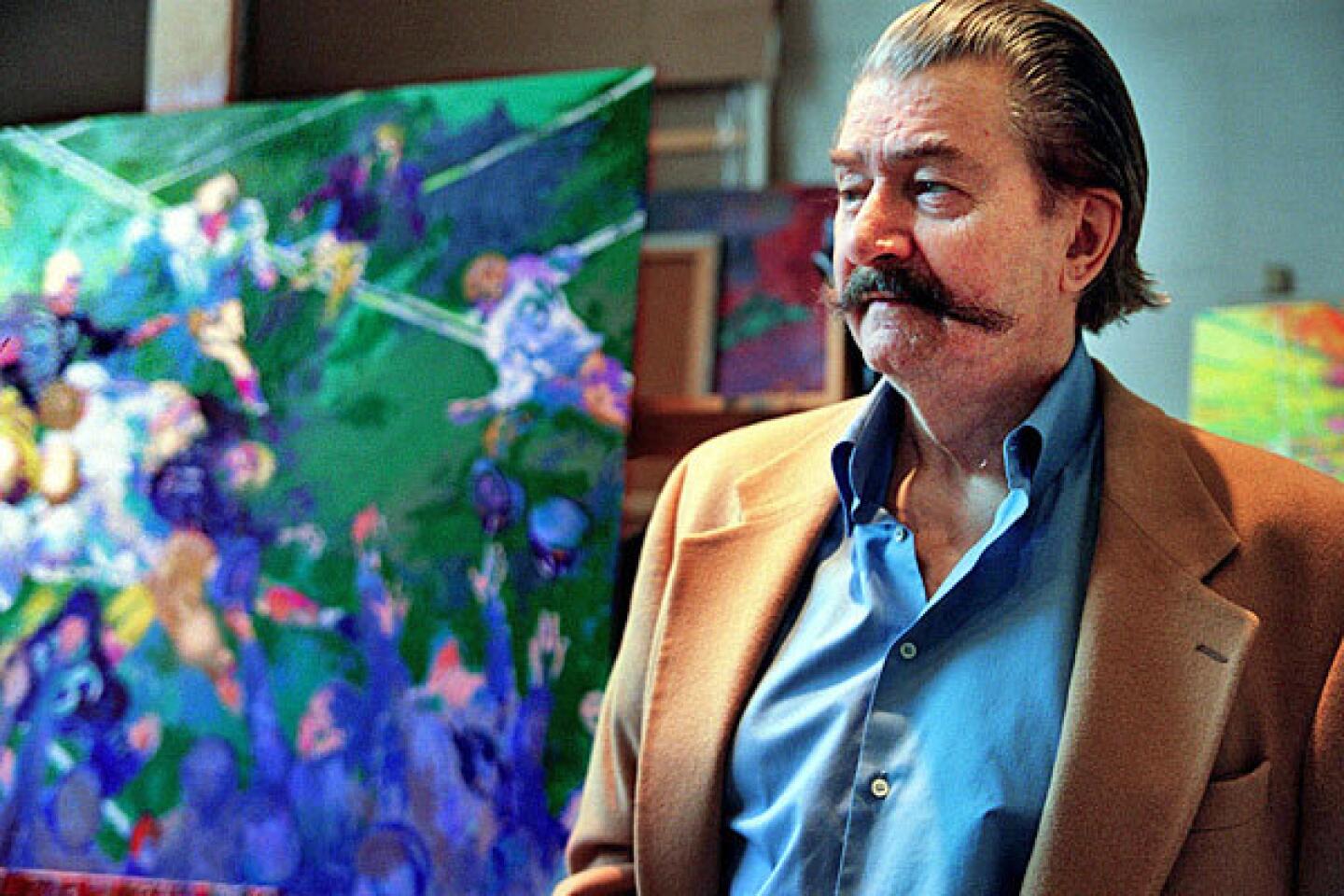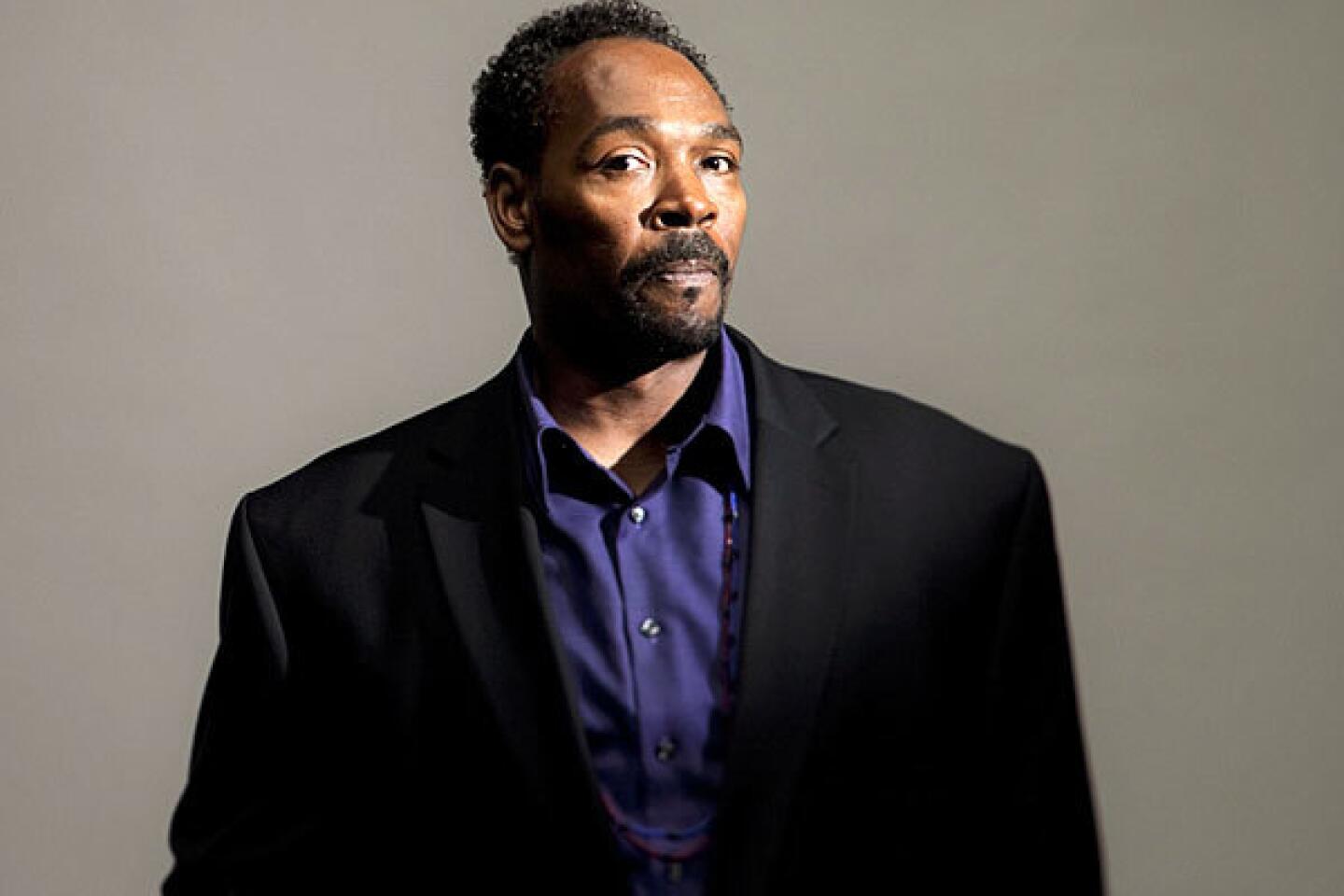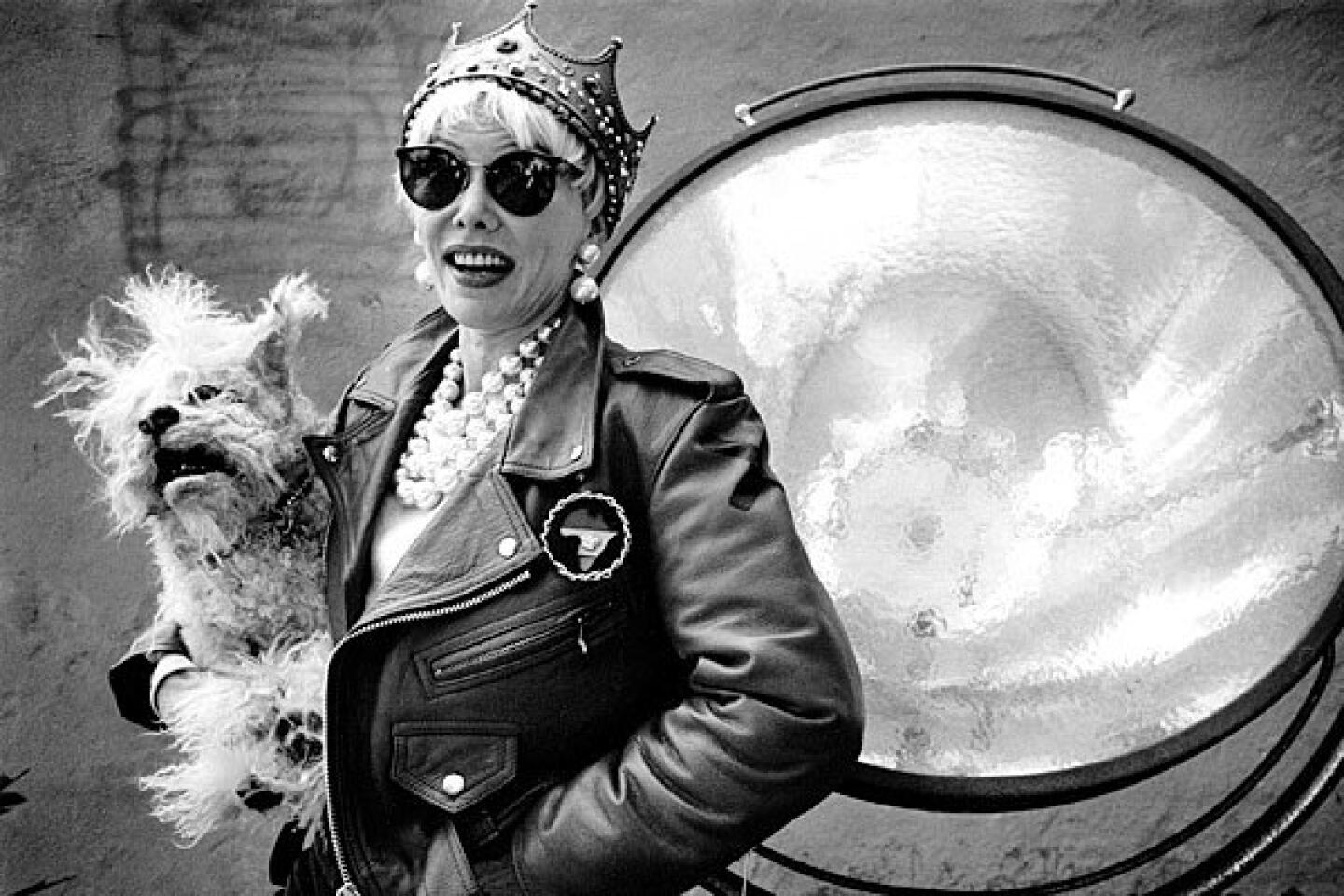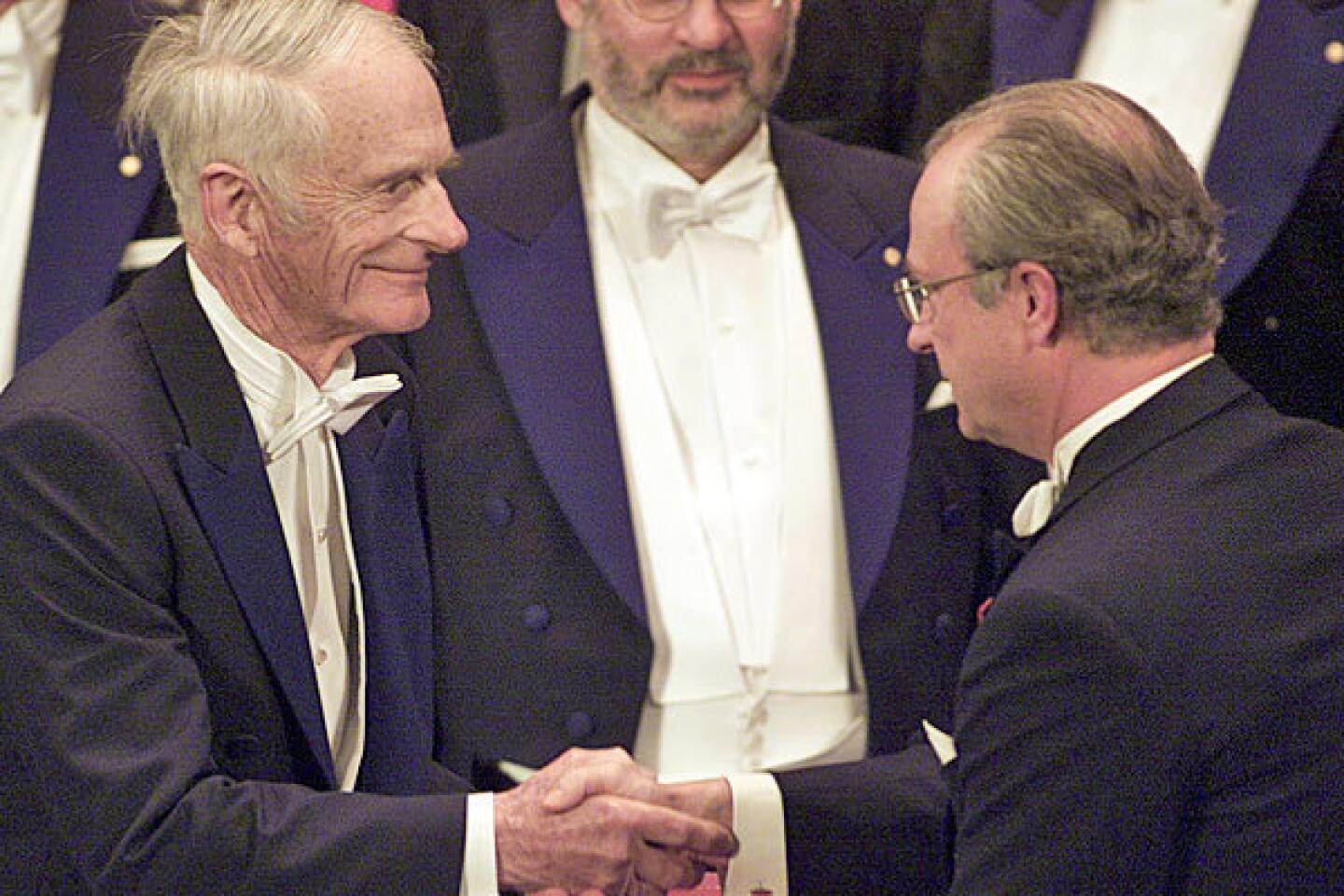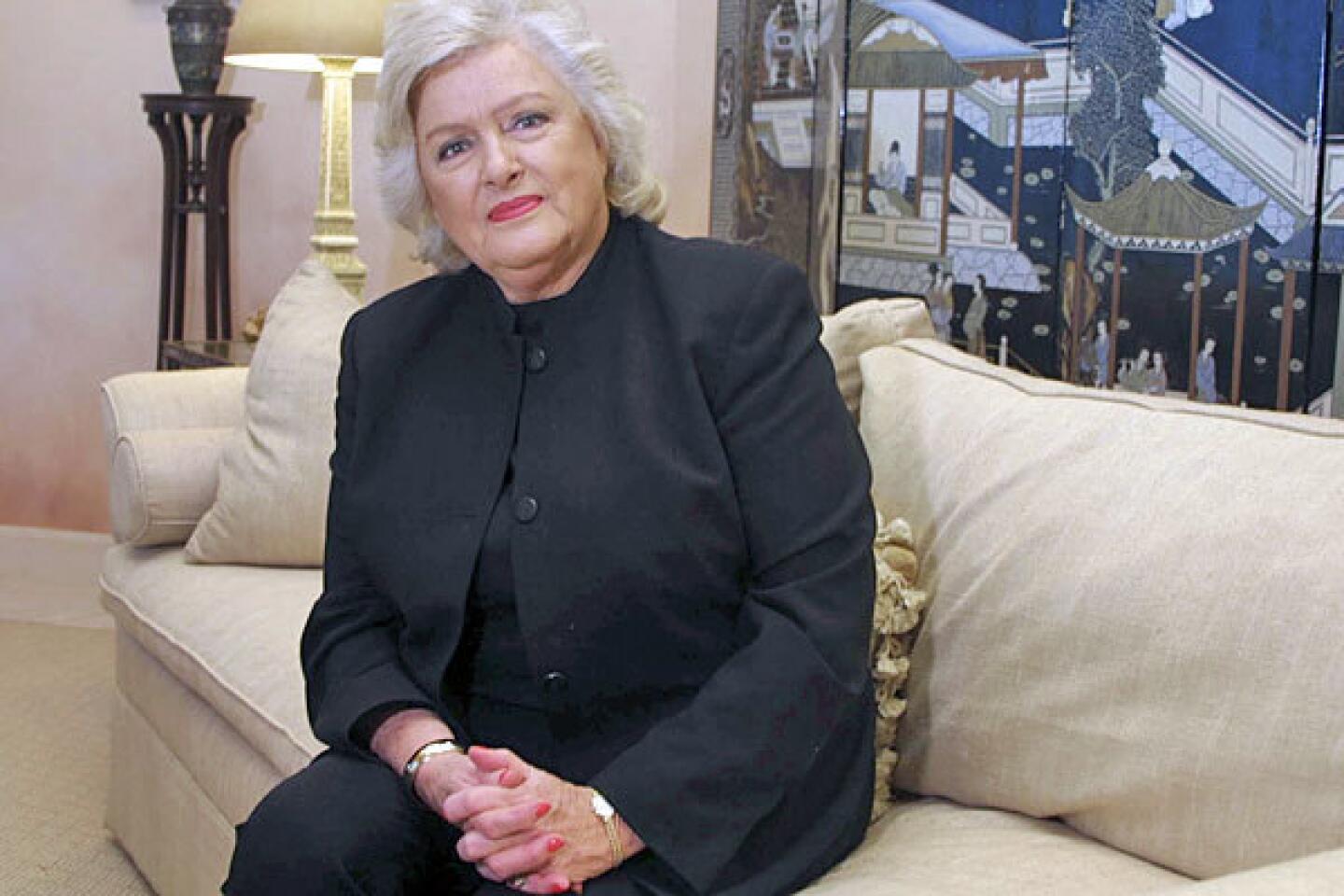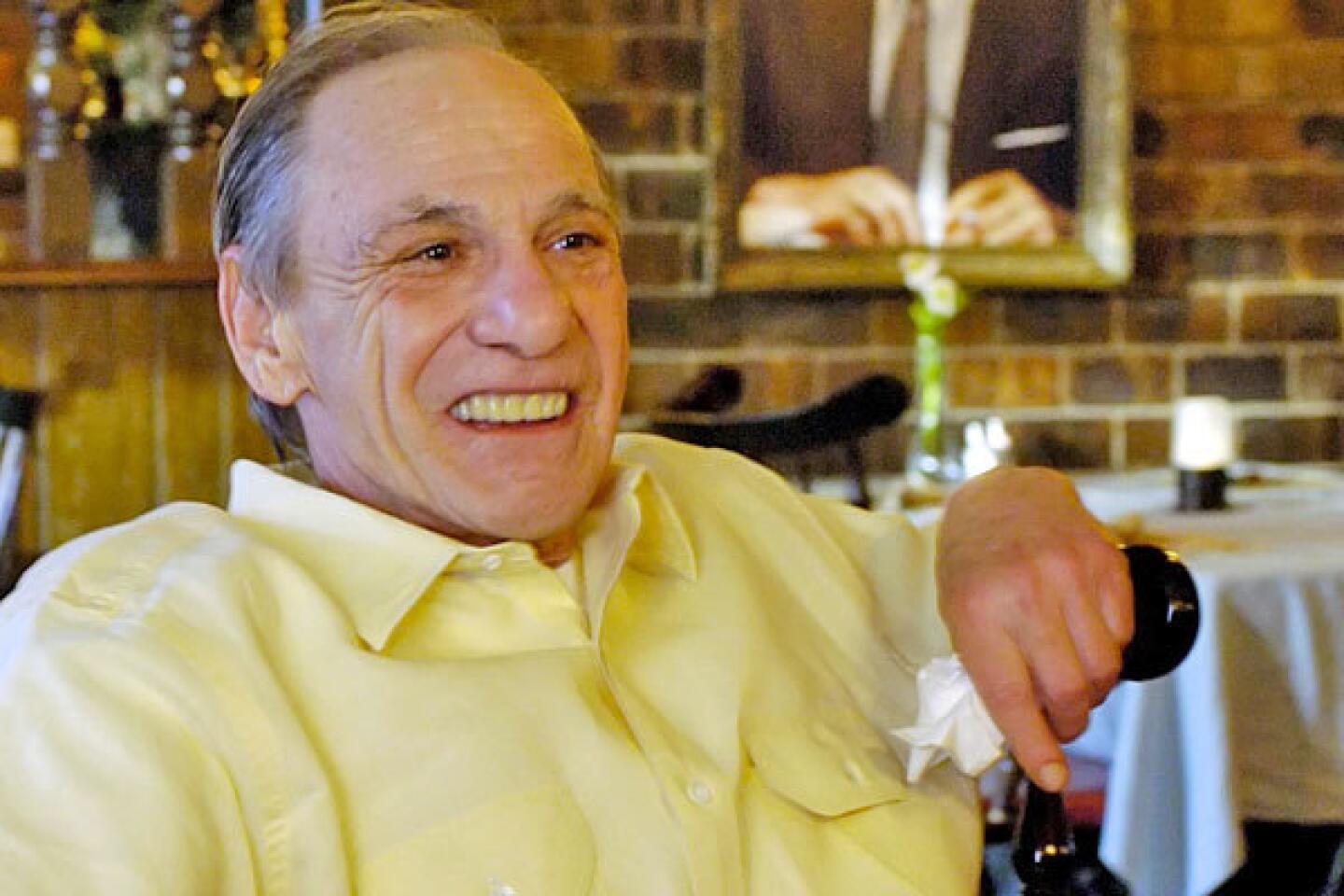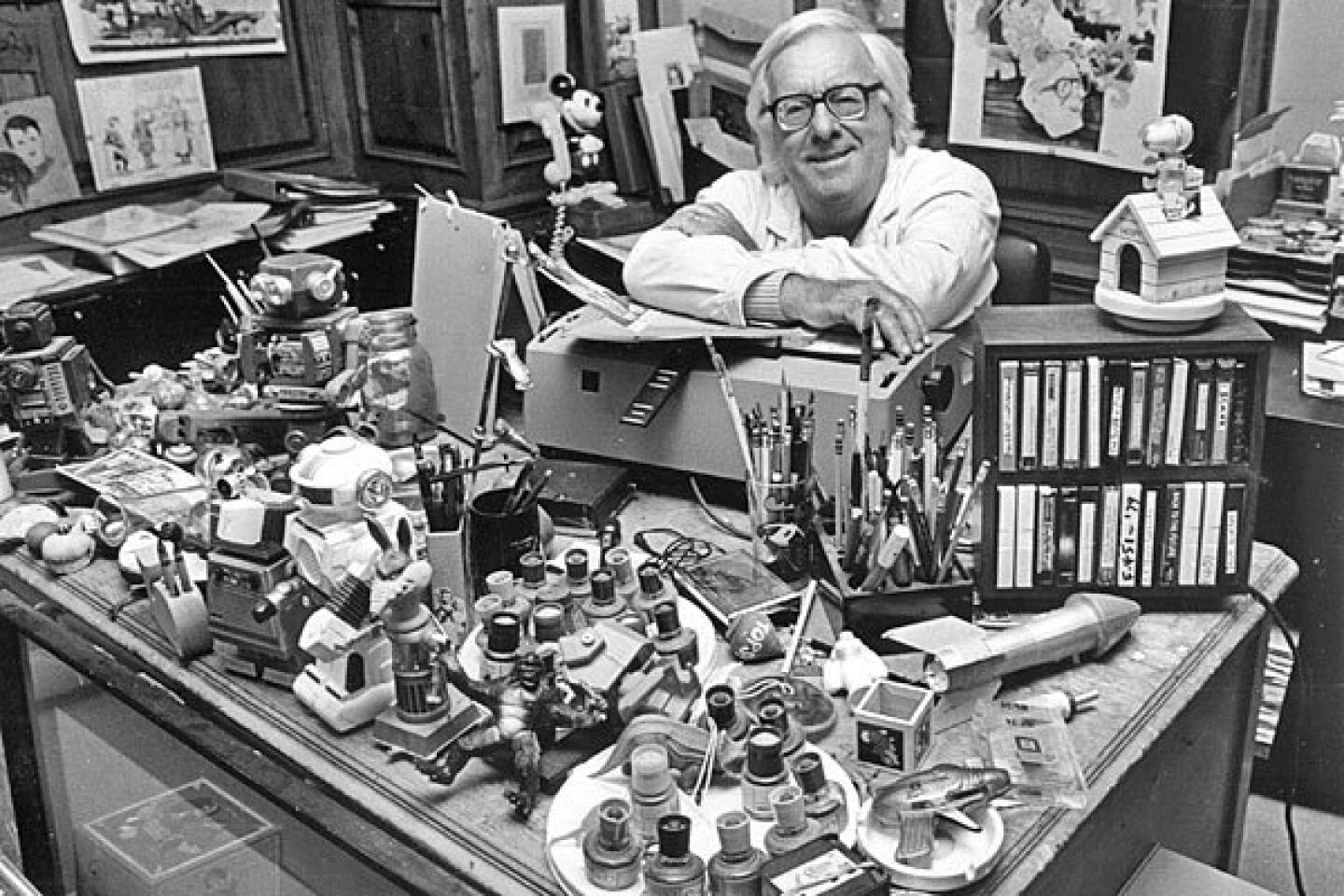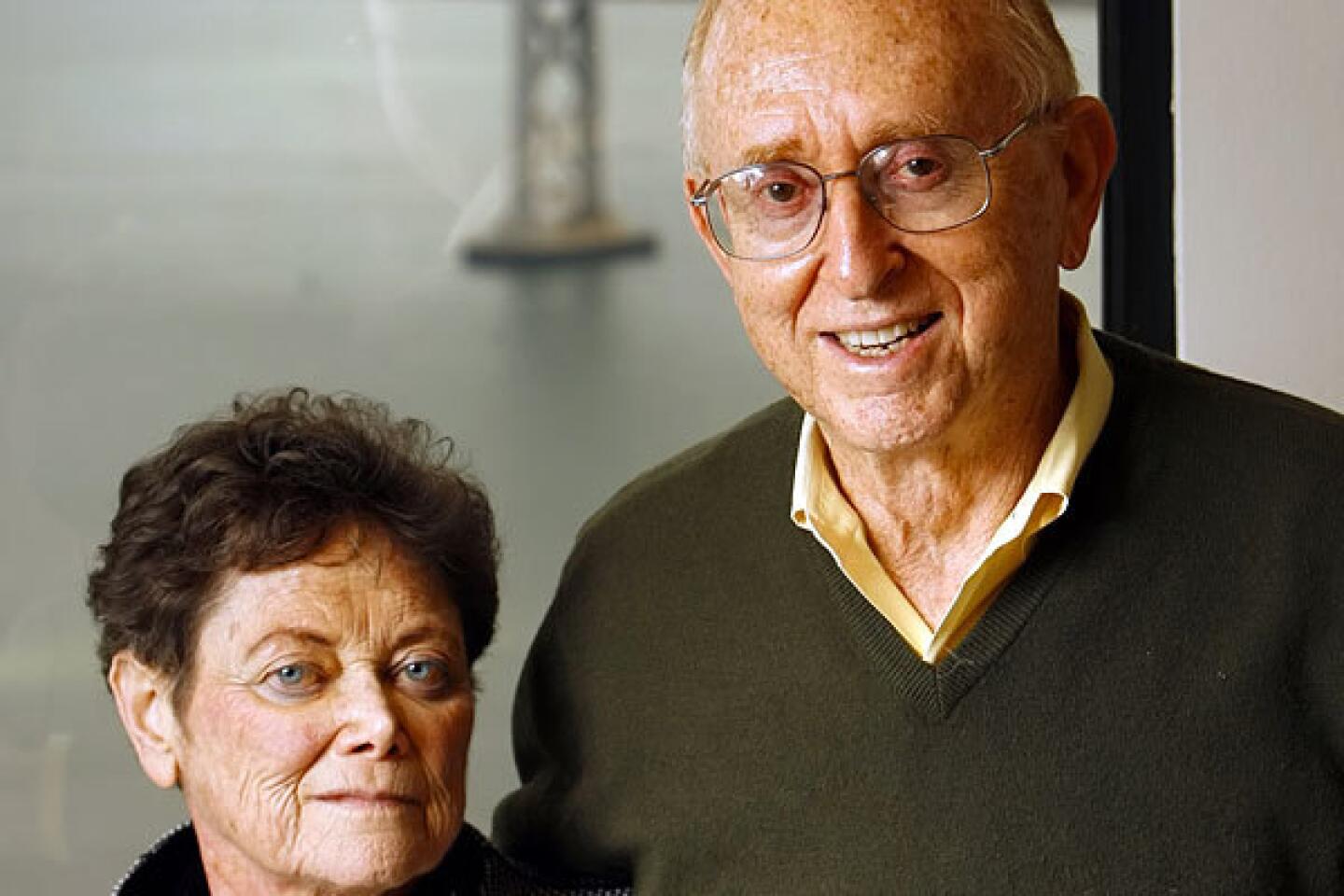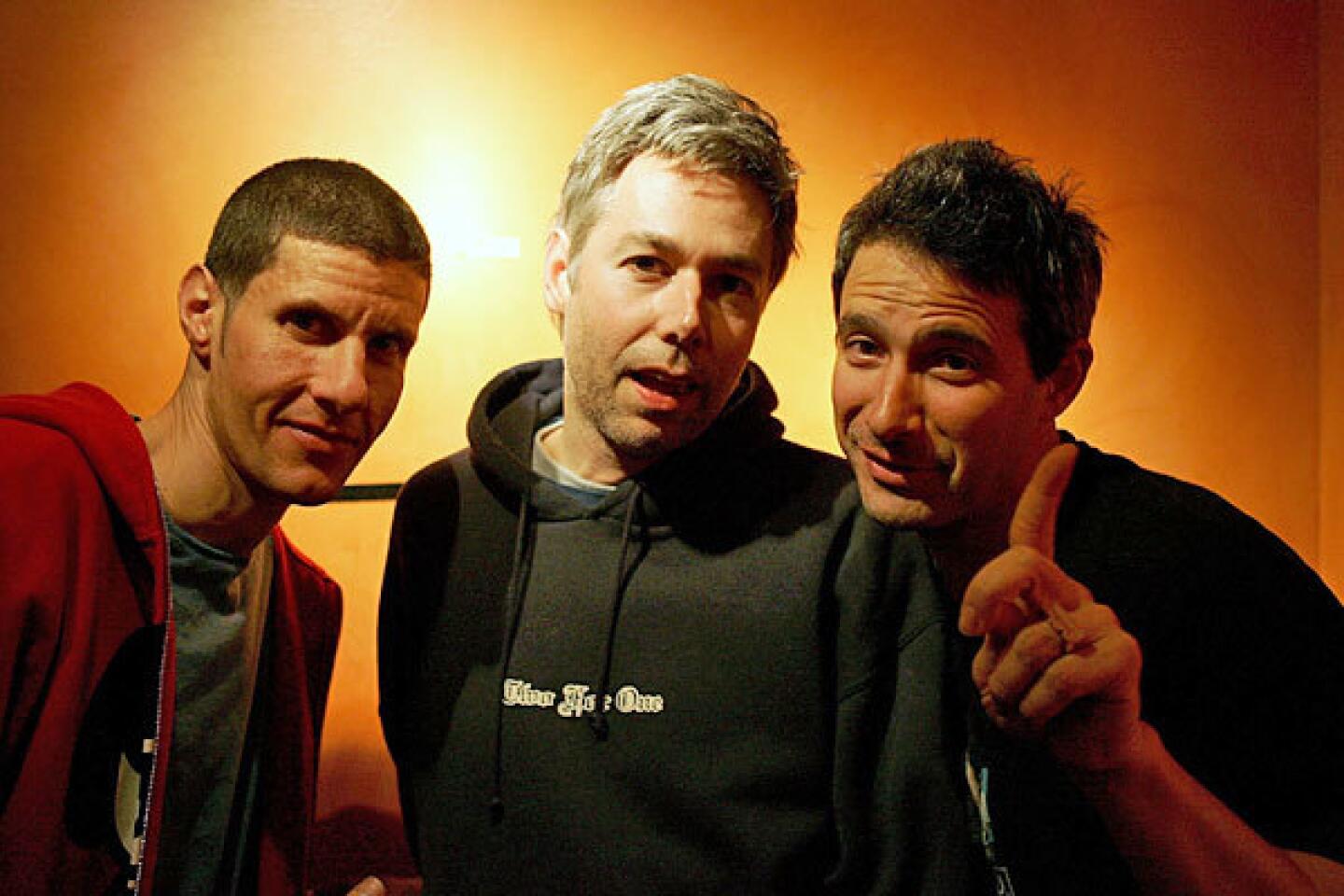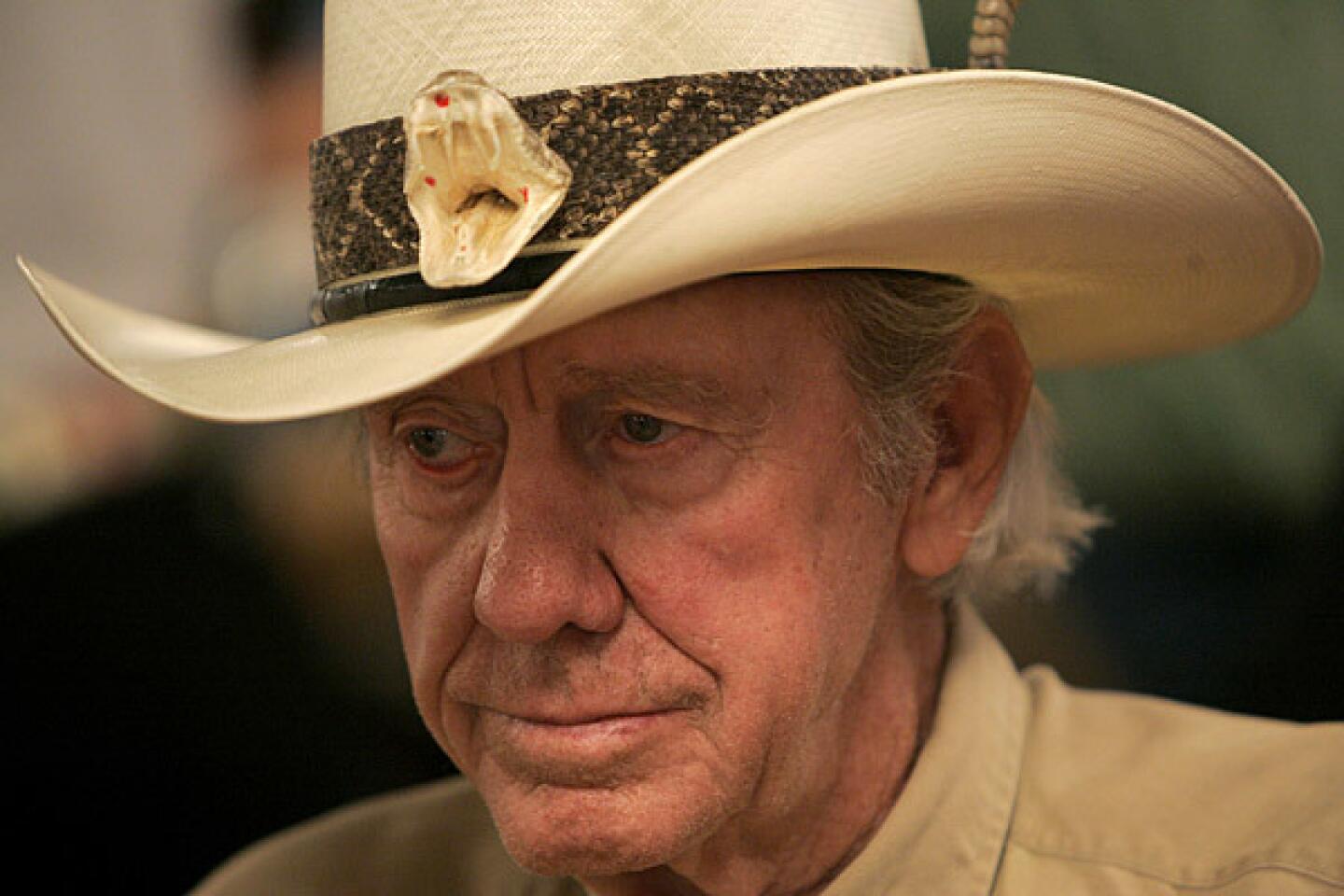Michael Asher dies at 69; pioneering conceptual artist
- Share via
Michael Asher, the pioneering conceptual artist who challenged expectations of what constitutes a work of art and what happens during an art critique, died in his sleep at his Los Angeles home early Monday after several years of poor health. He was 69.
His death was confirmed by his assistant, Yoko Kanayama.
A teacher at the California Institute of the Arts since 1973, Asher was famous for his wit and candor — and marathon-style “crits,” or critiques, that left vivid memories with generations of students. Designed to review student work, these courses could by his own account run from 10 a.m. to midnight.
“I throw away the clock,” Asher said in a 2006 interview. “There is never enough time to get everything said.”
“We talk a lot about the work. But what we’re probably discussing the most is the disparity between what a person says their work is about and what is actually being observed,” he said.
FOR THE RECORD:
Michael Asher: The obituary of conceptual artist Michael Asher in the Oct. 17 LATExtra section said that his father had died by 1994, the year his mother, Betty, died. Asher’s father, Leonard, died in 2003. —
Said Thomas Lawson, art school dean at CalArts: “His questioning could be unnerving, but it was also illuminating.... It was about giving more attention to students’ work than they would ever get again.”
Lawson described Asher’s teaching as an extension of his art projects, or vice versa, since both were based on a sort of investigative approach.
His art projects are called in art-world jargon “institutional critique”: work that somehow analyzes or questions the particular conditions of a museum or gallery environment. But unlike the work of some other artists grouped under that umbrella, Asher’s was not fueled by political dogma as much as intelligence and curiosity: How will an art experience change if you alter a choice operating assumption, often in the form of an architectural element?
One early “intervention,” as this breed of artwork is known, was a 1970 piece at Pomona College that involved removing the gallery doors, essentially forcing the gallery to stay open all day and night instead of the usual, restricted hours.
He reprised the concept of keeping a museum open 24/7 recently, both in his contribution for the 2010 Whitney Biennial (for which he won the Bucksbaum Award, given to one artist in the show) and in his work for the 2011 Pacific Standard Time show at the Pomona College Museum of Art.
For another early work, in 1974, he turned his attention to the Claire Copley gallery in Los Angeles. There he removed a crucial wall that protected the office space from view, framing the art gallery’s behind-the-scenes business operations as something worth viewing itself.
“Michael devoted his work to exploring the limits of the galleries and schools and museums that give context and space for art, poking at all sorts of barriers and shibboleths with a humor that was sometimes sly, and sometimes hilarious,” Lawson wrote in an online tribute. “He removed walls and doors and windows from galleries and museum spaces, letting in daylight and air, letting out preconceptions.”
John Baldessari, the conceptual artist who brought Asher onto the faculty of CalArts, calls his work “slyly subversive — he loved interrupting people’s normal way of understanding the world. I can imagine Michael doing a work where the hot water comes out of the cold water faucet and the cold comes out of the hot; that would be pure Michael.”
In 1979, Asher set his sights on an artwork at the Art Institute of Chicago: a 20th century reproduction of a marble sculpture by the 18th-century French sculptor Jean-Antoine Houdon that stood for decades on the steps of the museum. He moved it into an 18th-century paintings gallery where a real Houdon might be found, in what critics describe as an expose of the museum’s hierarchies of value.
In 2005 Asher took the same reproduction, which had been shipped off to Chicago City Hall, and moved it back to an 18th century gallery, highlighting the ways the museum itself had changed in the interim.
He also contributed to a 1999 Museum of Modern Art show that invited artist participation in the permanent collection by making a book that listed all 403 paintings and sculptures that the museum had de-accessioned or sold from its collection, calling attention to the way a museum constantly edits its own collection and attempts to redefine its identity. The experience of having to ask for the book, placed out of sight, was part of the work.
In 2008, he developed a maze of an installation for the Santa Monica Museum of Art that consisted of rebuilding in skeletal form (wood and metal, minus the sheetrock) every internal wall the museum had built for temporary exhibitions since moving into that space 10 years earlier — 44 in all.
Normally in a museum, Asher told The Times, “the display system is something that recedes and is supposed to be somewhat neutral. The reason is that the museum wants us to focus on the aesthetic value and the history of an art object. I’m trying to alter that. Instead of showing the artwork’s history, I’m showing its support.”
His artwork has become the stuff of art-world legend, and Sarah Thornton devoted a full chapter of “Seven Days in the Art World” to one of his interminable-seeming crits at CalArts. He has been shown in the Venice Bienniale (1976), Documenta in Kassel, Germany (1972 and 1982), and the Sao Paulo Biennial (1998). He has also over the years received awards and distinctions, including a Guggenheim Fellowship and National Endowment for the Arts grants.
But his work, not designed for an object-obsessed market, never brought him commercial success. Most of the work wasn’t even designed to last. As Times art critic Christopher Knight once wrote: “Asher doesn’t merely grant privilege to the art idea over the art object. Instead, he embraces experience as fundamental to a meaningful work of art.”
Asher was born July 15, 1943, in Los Angeles and received his bachelor’s degree in fine arts from UC Irvine in 1966. His parents were Leonard Asher, a physician, and Betty Asher, who originally worked as a nurse.
Over time his mother developed an interest in contemporary art. She worked as an assistant to Los Angeles County Museum of Art curator Maurice Tuchman, helped to raise funds for the museum and ultimately ran a gallery in partnership with Patricia Faure. The gallery showed work by such artists as Michael McMillen, Joel Shapiro, Kenneth Noland and Sam Francis.
Betty Asher died in 1994, by which time Michael’s father and sister Rayna Asher Allen were also deceased. The artist had no survivors. He had been on medical leave from CalArts since 2008, but several longtime friends and colleagues were unable to confirm any details about his health problems.
“He lived on his own in a fairly ascetic manner and kept the details of his private life private,” Lawson said.
James Rondeau, head of contemporary art at the Art Institute of Chicago, said Asher’s desire to keep a low profile also shaped his work, which involved disappearing into institutional structures instead of building a signature style or recognizable brand.
“So often today notoriety and fame are confused with enduring accomplishment; Michael ran counter to that,” he said. “His way of being in the world and making work was self-effacing, inconspicuous. He was so central to how we define conceptual art, but he had this way of seeming almost invisible.”
More to Read
Start your day right
Sign up for Essential California for the L.A. Times biggest news, features and recommendations in your inbox six days a week.
You may occasionally receive promotional content from the Los Angeles Times.


